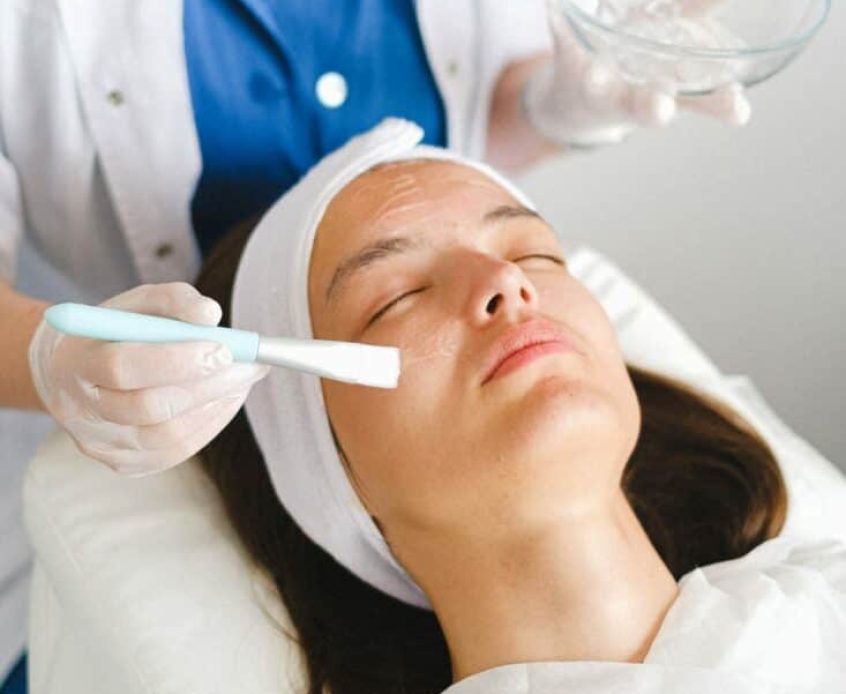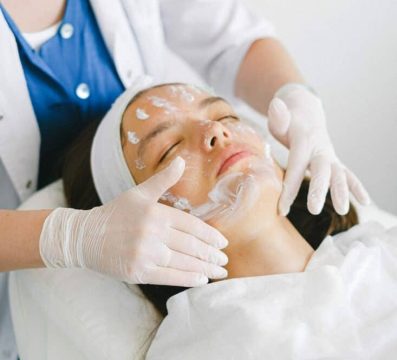Chemical Peels
Learn more about chemical peels, the benefits, and any safety concerns.




Chemical Peel Treatments
Reveal healthy skin by removing sun, scars, and coloration damage with a chemical peel. While very common and safe with minimal down-time, chemical peels are not for everyone. Read Is It Safe? section below for more information and call us with any concerns or questions.
Chemical peels are used to remove damaged skin cells, revealing healthier skin underneath. They improve the appearance and feel of the skin. During this procedure, chemical solutions will be applied to the area being treated, which causes the skin to exfoliate and eventually peel off. Once this happens, the new skin underneath is smoother, appears less wrinkled, and may have less damage. Superficial peels, which use mild acids like alpha-hydroxy acid to gently exfoliate. It only penetrates the outermost layer of skin. Medium peels, which use trichloroacetic or glycolic acid to reach the middle and outer layer of skills. This makes it more effective for removing damaged skin cells. Deep peels, which fully penetrate the middle layer of the skin to remove damaged skin cells; these peels often use phenol or tricholoracetic acid.
Light chemical peels do not require much down time. Medium and Deep can have effects for 1-3 weeks. The procedures last for about 30 minutes. Chemical peels help wrinkles and fine lines, sun damage, acne scars, hyperpigmentation, scars, melasma, uneven skin tone or redness.
When conducted by a trained skin care specialist, chemical peels are exceptionally safe. Before a chemical peel, do not use any type of retinol or retin-A topical medication for at least 48 hours, and inform your skin care specialist about any medications you take. Do not use Accutane for at least six months. Your doctor may also recommend that you take an antiviral medication if you have a history of fever blisters or cold sores to prevent a breakout around the mouth, or to use special lotions to improve treatment, like glycolic acid lotion, or a retinoid cream to prevent skin darkening. You should stop waxing, epilating, or using depilatory hair removal products the week before the peel. You should also avoid hair bleaching. Stop using facial scrubs and exfoliants the week before the peel.
Common side effects are temporary, and include redness, dryness, stinging or burning, and slight swelling. While rare, chemical peels can have more serious risks and dangerous side effects that can be permanent. Darkening or lightening of the skin color can be more common in people with darker skin. Permanent scarring is unlikely but can happen. People with herpes simplex may experience flares following a treatment. Very rarely, chemical peels can cause fungal or bacterial infections.
Before the procedure, we will likely have you tie back your hair. Your face will be cleaned, and eye protection like goggles or gauze may be applied. A cotton ball, gauze, or brush will be used to apply a chemical solution like salicylic acid to the area being treated. The skin will start to whiten and may have a slight stinging sensation. Once complete, the chemical solution will be removed, or a neutralizing solution will be added.
Recovery time is about four to seven days. Your skin may temporarily be lighter or darker. During recovery, follow our aesthetician’s instructions. We’ll give you specific instructions for how often to wash your face and moisturize, and which products you should use to do so. Try to stay out of the sun until your skin has healed and avoid using makeup or other cosmetics until your skin specialist says it’s safe. You can use ice packs for 20 minutes at a time, or a cool fan, to help relieve discomfort at home.
Treatment
$60
Add On
with a facial
